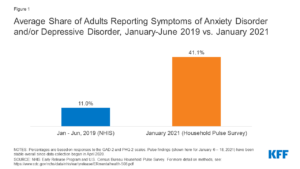How COVID-19 Has Changed Customer Support
06 Dec 2021 By: Carl Fisher
Updated
The COVID-19 outbreak has had a significant impact on every facet of our lives, business being one of them.
In order to stay afloat during the pandemic, businesses had to adapt and evolve quickly. Very few, if any, areas of any company have remained unchanged. Customer support is no different.
Health anxiety, social isolation, financial worries, all of these needs to be taken into account by companies that want to survive. All of this has been strongly reflected in how customer support departments have – or not – adapted to the pandemic.
This article can help you get a clear idea of what some companies have done well and what some have done wrong.
The Need for Personal Connection
If there is one thing people understand better thanks to the pandemic, it’s the need for connection. Prolonged isolation has had disastrous effects on people, and even a simple thing such as interacting with customer support can help.

COVID-19 has changed customer support forever in a way that made human touch essential. Therefore, support teams need to understand the importance of that personal human touch in their everyday operations. If you learn one thing from this article today, it’s this: show you’re human and show that you care through your actions.
Longer Hold Times
Covid restrictions and lockdowns have severely restricted our movements.
Going to the store and getting groceries was already a challenge. Going to banks, shopping malls, and basically, any brick-and-mortar business was pretty much out of the question. Instead, everything had to be done over the phone or online.
Whether people needed to gather information on a specific product, get a refund, or inquire about different offers and payment plans, they cannot do it in person. Customer support departments were understandingly overwhelmed, leading to longer hold times.
Roughly 53% of customers are going to take their business elsewhere if they don’t get an immediate response from a company. Reports on people waiting for three days to get information on a package they ordered have become common.
And so those companies that addressed those longer waittimes, stood out and came on top. The lesson here, as we enter the post-pandemic world, is that customer support needs to step up and focus on the increased need for more virtual agents than before.
Don’t let your customers wait. Invest more into your customer service, hire more support agents, maybe invest in chatbots. Do whatever you can to minimize on-call wait times.
The Need for More Data on Customer Needs
Covid has forced companies to rethink their strategies and their approach to business. This is best reflected in the fact that 57% of high-level executives have invested in tools that help them gather information on customer needs.
The pandemic has shown that companies need to think on their feet and rise to difficult occasions and crises. From the same lreport, 21% of high-level executives have invested in AIs and machine learning. Of course, customer support needs to be reflect all of this.
Through the usage and gathering of this data, companies get a clearer view of what people want.
They can learn what leads to conversions, and how they can match people’s needs. Then, you can harness this information, and direct it into how your call agents perform their duties.
The Importance of Branding through Customer Support
Building a strong brand is a given, and the best way to do that is through concrete actions. Improving customer support is a good start. A whopping 96% of consumers state that customer service directly influences their views on a brand.
As we discussed above, Covid-19 has changed customer support. On a practical level, a company needs to build a strategy. Building your brand during Covid can cement people’s opinions of you. Either direct more resources towards your team, or hire a strong brand strategy agency . Then, see how you can intertwine building your brand in other areas, while simultaneously strengthening your customer support departments.
Lower Responsiveness
Your customers have certain expectations. They expect similar levels of service, even though a pandemic is raging. In fact, 80% of customers expect better customer support during the pandemic. Sadly, the opposite seems to be happening.
Around 54% of people report their issues have not been resolved at all by customer service reps. From the same report, 18% of customers never even reached a representative. Only 15% of customers reported that they needed just one call to resolve an issue. The rest required multiple, where 9% tried to contact companies more than 20 times.
“One thing is clear; not being agile – or ready for anything – can be a huge danger. We must learn to move quickly and in understanding the new experience customer mindset, we will continue to have customers.”
Blake Morgan, Customer Experience Futurist
There is no easier way to lose the trust of your consumers than by ignoring them. Hire more people, broaden your customer support services through companies like HelpSquad, do whatever you can to avoid leaving your customers in the dark.
More Redirects and Escalations
People are making their inquiries over the phone or online, instead of going in person. Naturally, customer service departments are processing many more calls. Because most of their employees are working from home, logistical issues abound.

A customer service center needs to redirect calls from customers, onto the home phones and laptops of their employees. Home offices replaced the standard office infrastructure.
This led to greater hold times, connection issues, as well as an increase in calls being sent up the customer service hierarchy of 68%.
Providing your people with better equipment is one solution. You can also create concrete plans on how to handle customers becoming irritated by holds and escalations.
The Need to Build Your Brand Through Empathy
“Empathy is a muscle, so it needs to be exercised.” Satya Nadella, CEO of Microsoft
Empathy for your customers is paramount. You need to understand what they are going through, and try to intercept their needs through your services. Empathy is the key for building brand loyalty.
There are three equally important ways that a company can show it cares:
- Emphasize, and practice safety policies
- Provide messages of support
- Modify your services and improve the customer experience
Adhering to Covid safety policies is a given. Not only is it highly illegal, ignoring these rules puts your customers in jeopardy. Having disinfected dispensers available, being ultra-strict on mask policies, all show that you value people’s safety.
Messages of support can seriously backfire if you don’t respect the other points – you’re going to make your company look hypocritical. With that out of the way – put messages showing solidarity and support on your website. Remind people they are not alone.
Finally, show empathy through action. Too many companies stick to the first two issues and still leave their customers on hold for days.
How COVID-19 Has Changed Customer Support
Learn from the above notes and examples, both good and bad. Understanding how customer support has changed during Covid will help you adapt better to the pandemic.
You will get a better understanding of what you can do better, where you can improve, and what the pitfalls that you need to avoid.


